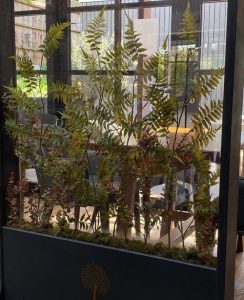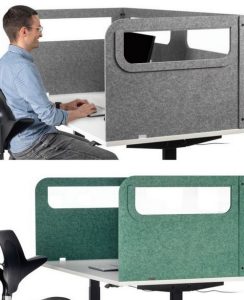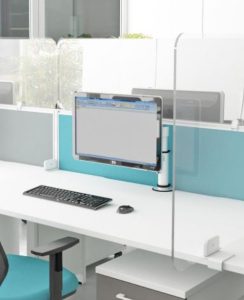This is the second in a series of 5 blogs exploring key considerations for employers who are establishing their post-pandemic arrangements for knowledge workers. Click here for the first in the series.
 Once you have a plan for the mental and physical wellbeing of your personnel, you can start looking at your existing office premises. You need to ensure you have a welcoming environment that complies with government guidelines and your own policies but also makes your people feel safe at work. Since much about the pandemic has been unexpected and inconsistent, you will almost certainly want to be prepared for possible future social distancing and space management demands as well.
Once you have a plan for the mental and physical wellbeing of your personnel, you can start looking at your existing office premises. You need to ensure you have a welcoming environment that complies with government guidelines and your own policies but also makes your people feel safe at work. Since much about the pandemic has been unexpected and inconsistent, you will almost certainly want to be prepared for possible future social distancing and space management demands as well.
Before you bring people back, there are key decisions to be made. The drivers for these decisions will be a blend of corporate culture, mix of activities, staff feedback and operational needs.
• What will be the average number of days people work in the office? This will inform the number of desks needed.
• How much space do you have for those desks? This will also be part of another discussion about ‘Addressing the 4Cs’.

Once you have sorted out how to deploy your desks, you need to make them safe. There may well be other areas where this is a consideration but people sitting at desks, often facing one another, will be a key area for risk assessment and response. The trend towards smaller and smaller desks over the last decade will make this a particular issue for many. One easy approach, if there are enough desks is to allocate ‘A’ and ‘B’ workstations (many organisations use two colours instead) and designate alternate days for use.

From a sustainability perspective, however, acrylic is not a good solution. As a viable alternative in many circumstances, we offer a screen system which is both 100% recycled and 100% recyclable.
For a floor-mounted option, which also offers a biophilic benefit, our Living Spaces screens incorporate lifelike plants within the design.
Click here for the next blog in the series.